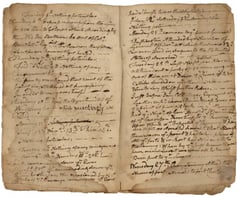For those looking to transition beyond replicating hobby store purchased recipes and instead want to create their own takes on recipes, a crucial first step is to properly track your brewing process.
The best way to track yourself is to create a Brew Log (also known as a Brew Journal).
There are templates available for download (and eve n fancier leather-bound journals available for purchase, if that interests you), but as long as you know what information you need to record, a Brew Log is something you can create on your own in Microsoft Excel or Word (just make sure you back up your records).
n fancier leather-bound journals available for purchase, if that interests you), but as long as you know what information you need to record, a Brew Log is something you can create on your own in Microsoft Excel or Word (just make sure you back up your records).
So, what data should I keep track of in a home brew journal? This is what we like to keep records of:
- Beer batch name.
- Type of beer brewed.
- Batch number (in the event you’re recreating the same recipe).
- Malt type used, and quantity used.
- Hop type used, and quantity used.
- Yeast type used, and quantity used. You may also want to record how the yeast was stored.
- Additional ingredients used, and quantity used. Spices, fruits, clarifying agents, etc. should be tracked, including how these ingredients were stored.
- Priming sugar used, and quantity used.
- Water used. Did you use tap? Bottled? What was the temperature of your water when used? Did you change anything about it?
- Specific Gravity readings. You should include the initial target, as well as readings during the boil stage, cooling stage, and final stage. Keep track of dates.
- Brewing recordings that track each step of the brewing process. This is where you should keep a step-by-step record of the experience, including when you start each part of the recipe, how long each step takes, temperature checks, fermentation progression, when you’re cleaning, etc.
- Tasting notes, including appearance, flavor, aroma, and mouth feel.
When creating a Brew Log, it is recommended that you keep track of as much information as possible, in the moment. If you’re anything like me, it will be hard to remember details that took place even a day earlier, so tracking throughout the brewing process is recommended.
And if you are making changes to a recipe, remember it's important to make only one change to your home brew recipe at a time.
If there is one key takeaway for you from this blog, it is that you should be as thorough and consistent in your brew log as possible.
We’d love to hear from others out there! Are there additional bits of information you would recommend tracking in your brew log? Any preferences in where you keep track of your log? If so, we invite you to join the conversation and share your thoughts below.


